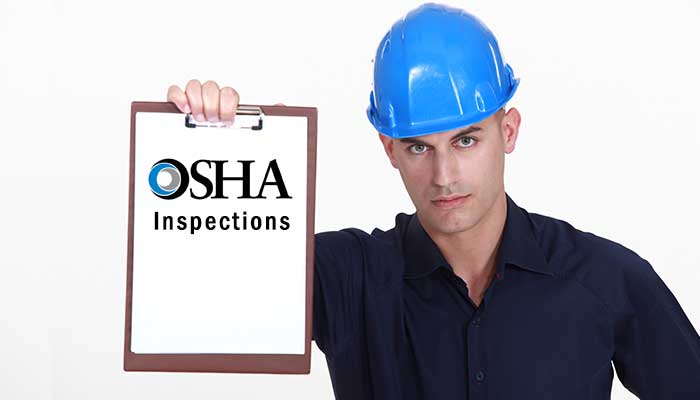An OSHA inspection can happen at any time. You won’t have advance warning that an inspector is going to show up.  You can stress, lose sleep, and make yourself sick with worry, or you can prepare and get through the inspection with your business intact.
You can stress, lose sleep, and make yourself sick with worry, or you can prepare and get through the inspection with your business intact.
Preparation is always better than stress, so let’s begin with some important points to consider:
- OSHA enforcement efforts are currently at an all-time high with no signs of slowing down, and so the probability of your company getting inspected is higher than ever.
- Given OSHA’s new fine increases, it’s now expected that the average fine from a single, comprehensive inspection will range between $37,000 – 90,000. For companies who lack verified and complete health and safety programs, those fines could end up being much higher.
- Even companies with good relationships with local OSHA officials can get inspected, and often do.
- Many companies end up treating enforcement inspections too casually, which can end up costing them significantly.
- Enforcement inspectors will use all lawful means possible to prosecute violators. If they see a violation, they have to cite it, or risk putting themselves in a position of liability.
- Employers have rights regarding OSHA enforcement actions, and need to understand and protect those rights in order to avoid additional damages, costs and liabilities.
To prepare for an OSHA inspection, there are some things that you’ll want to do ahead of time and some things that you’ll want to take care of on the day the inspector arrives.
Assign Responsibilities
There needs to be somebody in your organization assigned the responsibility of meeting with the OSHA investigator when they come knocking at your door. The person assigned this responsibility will need to know where all of your company policies and documents are located. There also needs to be a back-up person responsible for meeting with OSHA in case the person originally assigned responsibility is unavailable. Inspectors will typically wait no longer than an hour before insisting that the investigation move forward.
Perform Hazard Assessments & Safety Trainings
Employers are required by OSHA to do a job hazards analysis for each type of job that will be performed in the workplace. Employers should have a form denoting what hazards exist for each job and how they plan to reduce those hazards.
Make sure that an official OSHA poster describing employee rights is clearly displayed in your workplace. When it comes to safety training, ensure every employee has completed their required training. Training needs to always be up-to-date.
Copy the Inspector
It’s a good idea to have a kit ready to carry along with you while an OSHA inspector is on site. The kit should include a notepad and pen so you can record the inspector’s activities, from where they go to what things they examine. You might also want to consider carrying along a digital camera or video camera to get visual records of everything the OSHA inspector observes.
For photos of machinery and objects that may be difficult to recognize in a picture, have a small dry-erase board and dry-erase pen ready so you can write the name of the object and place it in the picture as an identifier. The kit should also contain a measuring tape so you can measure whatever the inspector measures, and a flashlight in case you need to see in dimly lit areas.
Perform Periodic Internal Audits
Employers should consistently review paperwork to make sure everything is up-to-date and correct. They should also periodically check to ensure all required safety training has been administered and recorded. Scheduling periodic internal audits in which you walk-through the facility and look for violations as if you were an OSHA investigator can also be an effective way of staying prepared and ensuring you are compliant.
Want to learn more about how you can prepare for an OSHA inspection, join industry veteran Nate Burgei (a former OSHA compliance officer), as he explores the regulatory hurdles of overcoming an OSHA inspection.



